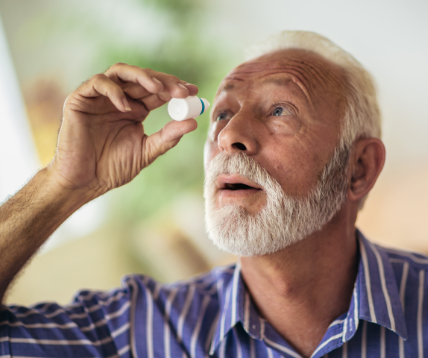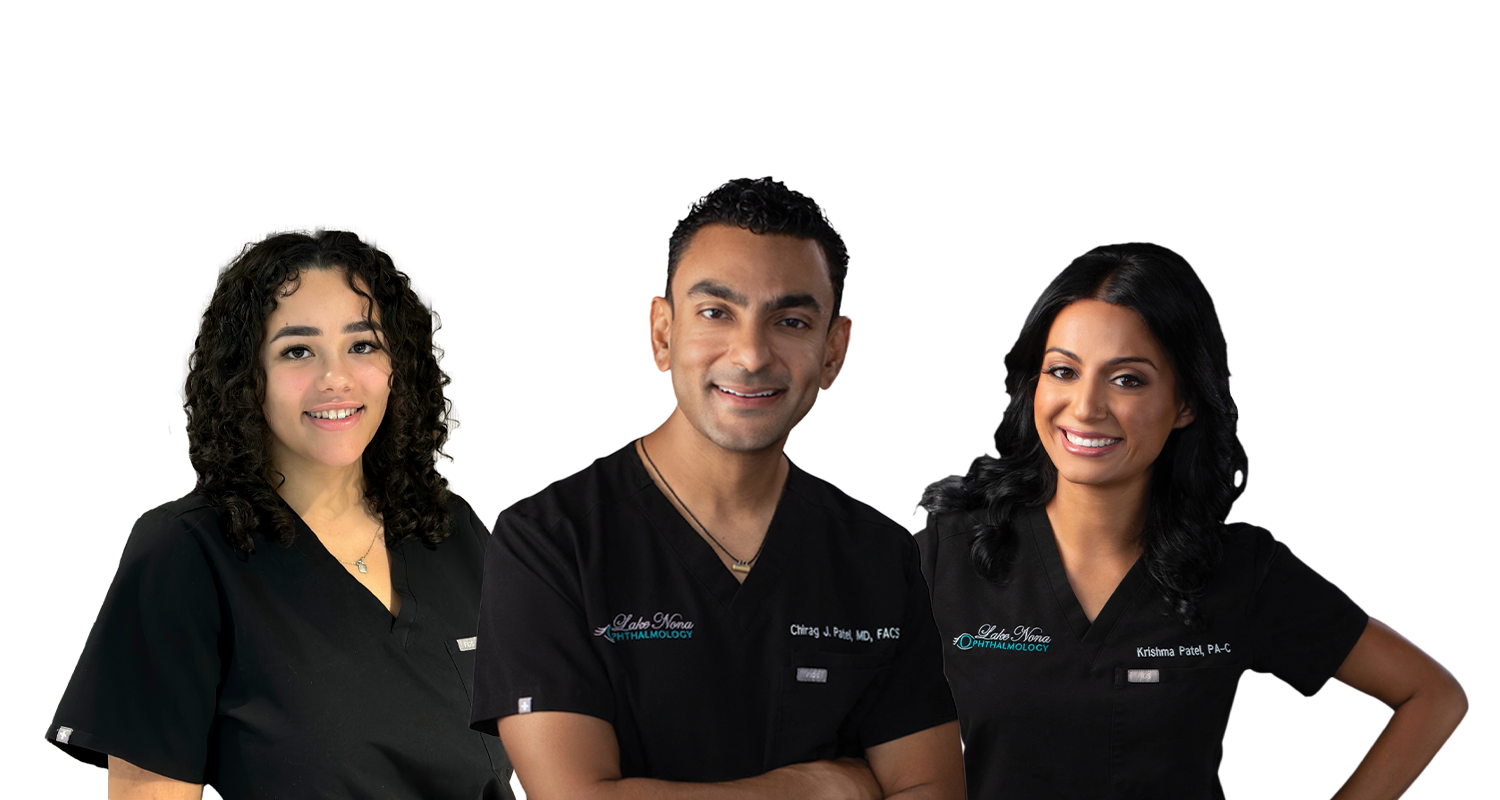- What is dry eye disease?
- What are the symptoms of dry eyes?
- How is dry eye diagnosed?
- How is dry eye disease treated?
- Does dry eye go away on its own?
Dry eye is a disease where the surface of your eyes are not adequately lubricated, either because of a lack of tears or poor quality tears. Dry eyes is initially treated by non-prescription eye drops and gels, but in some cases further treatment and procedures may be necessary.
Dry eye disease is actually a fairly common condition, particularly with older people. Each year, roughly 3.2 million women and 1.68 million men over the age of 50 are diagnosed as having dry eyes. However, dry eye syndrome can occur at any age. A total of 16 million people in the U.S. currently suffer from this disease. This article will help you understand dry eye disease and how to treat this condition.
What is Dry Eye Disease?
Keratoconjunctivitis sicca is the medical term used for dry eye disease, which is also known as dry eye syndrome. There are glands near the eyes that produce tears to keep the surface of the eye lubricated. Dry eyes are the result of reduced or malfunctioning tear production, which is important for the lubrication of the eye.
Interestingly, your tears are more complex than you might realize. Each tear is made up of three layers that form what doctors recognize as the tear film:
- The outside oil layer of the tear, which helps keep the lubrication from evaporating
- The watery layer in the middle of the tear, which helps wash away grit and dirt from the eye
- The inner mucus layer is sticky, coating and sticking to the cornea of the eye
The tear film lubricates and protects the surface of the eye. Without the tear film, the surface of your eyes can become susceptible to a variety of problems causing discomfort, pain, and even blurry vision. As you blink, tears wash across the eyes and then drain into the nose. It’s a complex process that involves several glands for tear production and drainage systems to wash the fluid away. When this system is disrupted, problems can occur that can negatively affect your quality of life.
One study says, “Moderate to severe DED (dry eye disease) is associated with significant pain, limitations in performing daily activities, reduced vitality, poor general health, and often depression.”
What Are the Symptoms of Dry Eyes?
Dry eye disease is an uncomfortable disorder that can damage your eyes if left untreated. Some of the symptoms of dry eyes includes:
- Blurred vision or eye fatigue
- Burning, stinging, or scratchy eyes
- Difficulty wearing contact lenses
- Eye redness
- Feeling like there is something in your eyes
- Light sensitivity
- Mucus in or around your eyes
- Problems or pain when opening the eyes
- Trouble seeing when driving at night
- Watery eyes, which is the body’s way of responding to the eye irritation
Dry eye disease is uncomfortable but not everyone suffers from it. Women are more likely to have the condition, which is likely due to hormonal changes that disrupt tear production. People make fewer tears as they grow older, which is why more people over the age of 50 have dry eye syndrome.
Other risk factors for the disease include:
- A deficiency in omega-3 fatty acids or vitamin A
- Allergies that impact the eyes such as hay fever
- Diabetes or other chronic health conditions
- Environmental conditions such as dry air, smoke, or wind
- Glandular conditions affecting tear production
- Having laser vision correction
- Skin conditions on or near the eyes
- Some types of medications
- Spending too long looking at screens
- Wearing contact lenses
How is Dry Eye Diagnosed?
Dry eye disease is diagnosed through a complete eye exam by an ophthalmologist. During this process, your doctor will administer eye drops to check your vision and eye health.
The exam could include one of several tests for dry eye syndrome, including:
- Schirmer’s test, where the doctor uses a small piece of paper to measure tear production
- Slit lamp test with a microscope to check tear distribution, quantity, and quality
- Tear breakup time, which measures how long the tear film remains on the eye after you blink
Once the problem is diagnosed, your doctor will determine a treatment plan to help you overcome the condition and help your eyes regain their health.
How is Dry Eye Disease Treated?
 Typically, your ophthalmologist will prescribe one or more medications or suggest over-the-counter remedies for the eyes. This could include:
Typically, your ophthalmologist will prescribe one or more medications or suggest over-the-counter remedies for the eyes. This could include:
- Artificial tears which can be purchased over-the-counter without a prescription
- Moisturizing gels or ointments which can also be purchased over-the-counter
- Prescription eye drops like Restasis, Cequa, or Xiidra may be prescribed
- Punctal plugs may be placed in the tear ducts to help keep tears in the eyes longer (instead of draining out the tear duct)
- Surgery is sometimes an option to help tighten the lower eyelids to retain more tears
If the dry eye is a side effect of a medication you’re currently taking, the doctor may recommend changing your prescription.
Does Dry Eye Go Away on Its Own?
Typically, dry eye does not go away on its own, can worsen, and cause damage to your eyes and your vision. However, there are some things you can do to improve dry eye syndrome. For example, you can:
- Avoid situations that dry out the eyes, such as smoke, air conditioning, dry environments, or wind
- Consume more omega-3 fatty acids and vitamin A, either through diet or supplements
- Drink more water and stay hydrated
- Get more sleep to allow the eyes to rest
- Run a humidifier to moisturize the air
- Take a break from digital devices
- Use warm compresses, eyelid massages, or eyelid cleaners
- Wear wraparound sunglasses outside
Dry eyes affect up to 50% of the population at any given time. Dry eye syndrome is just one of the disorders we screen and treat at Lake Nona Ophthalmology. If you haven’t scheduled your annual check-up, it’s time to call on us. Our practice has COVID-19 protocols in place to protect you and our staff during your visit. If you’re experiencing the symptoms of dry eyes, please don’t wait, click here to request an appointment.



